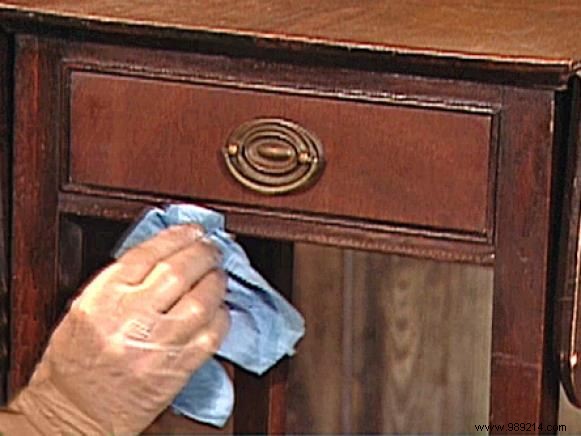The only way to duplicate the look of an antique is with a hand-rubbed, penetrating oil finish. One product that is often recommended is flaxseed oil, but the problem with flaxseed oil is that it never dries completely, so it is always a bit sticky. The problem gets especially bad in hot weather.

Instead, consider tung oil, which gives you a harder finish. The best way to apply tung oil is actually 400 grit sandpaper.
- Sand the surface and wipe off all sawdust with a tack cloth.
- Pour a generous amount of tung oil directly onto the surface.
- Use the sandpaper to rub the oil all over the wood. It will create a fine sawdust, which will fill the pores of the wood for a smooth finish.
- Use a rag to wipe off excess oil. The oil will harden inside the wood.
- You may have to repeat this process two or three times, but it will be worth it.
The finish of an antique can be refreshed with tung oil. Apply with a rag or (if the wood feels rough) a piece of 400-grit sandpaper.
More tips for DIY:
- Never throw anything away, not even rusty nails. Save them in case you ever need to repair an old piece of furniture and need nails to mix it up. Or, put them in a jar and add household vinegar. The chemical reaction between the vinegar and the nail will produce a large water-based stain. The silver gray color will look especially good on oak.
- The general rule of thumb is that if you have a white or gray mark, it means moisture is trapped under the finish. A black mark means that moisture has penetrated all the way into the wood; that's the hardest mark to remove. To remove the gray mark, use 400-grit sandpaper, moisten with lemon oil or mineral oil, and lightly sand the table. Keep the sandpaper saturated with oil so it doesn't damage the table, and you should be able to polish the mark off the wood.
- Hard maple is best for a beginner trying their hand at woodturning:it has a good grain and doesn't chip.